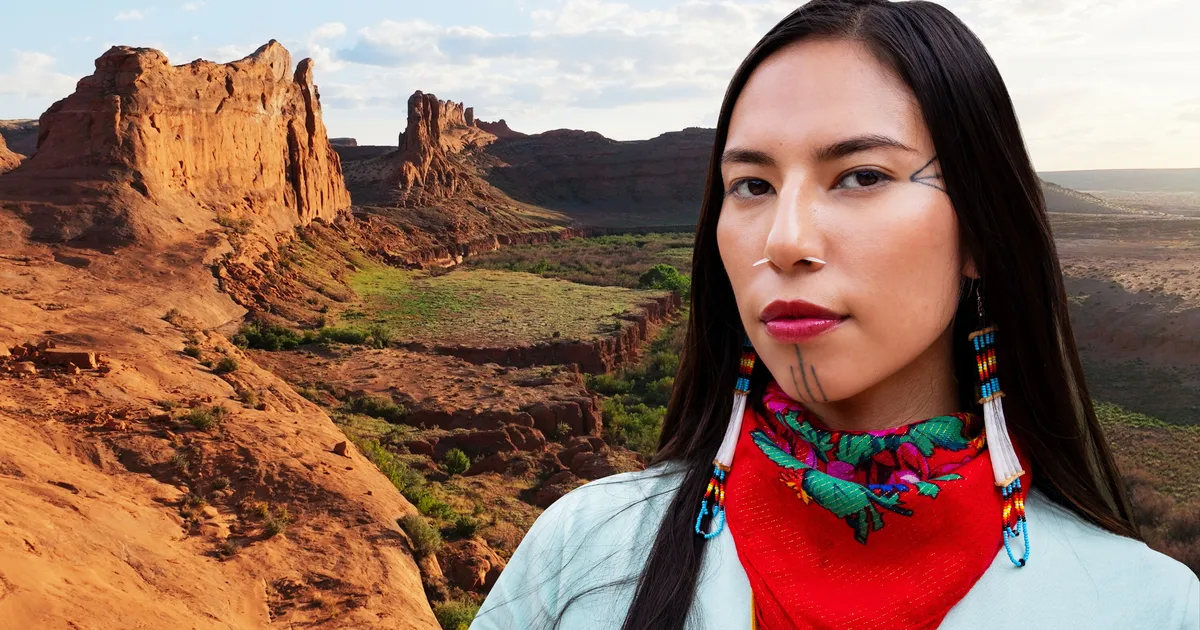
LOADINGERROR LOADING
The Colorado River’s uncertain future is the focus of the new nature documentary “The American Southwest.”
Stunningly captured by director Ben Masters with narration from model and climate justice advocate Quannah ChasingHorse, the film debuted in theaters on Sept. 5 and hits major streaming platforms Friday.
Advertisement
“The American Southwest” highlights the abundance of life in the 1,450-mile-long waterway — including elk, trout, salmon, condors, Mojave rattlesnakes and jaguars — while revealing what stands to be lost if the river isn’t protected.
The Colorado River, which serves as a lifeline for over 40 million people, has lost trillions of gallons over the past two decades from drought, climate change and overuse. Human attempts to control the river with reservoirs and dams allowed cities to blossom, but also erased ecosystems and hastened the river’s long-term decline.
For ChasingHorse, the urgency of the crisis is undeniable.
“In my Lakota culture, mní wičhóni means ‘water is life.’ And I think every single culture that I have experienced has their own version of that,” she told HuffPost.
Advertisement
As part of Alaska’s Han Gwich’in people and a member of the Lakota’s Sicangu and Oglala nations, ChasingHorse was taught that people should be the stewards — and not masters — of the land and water around them.
Advertisement
“We’re the ones that have experienced these things for generations and generations and generations,” she said. “We’re the ones who know these lands like the back of our hand.”
That perspective could be key to the river’s survival, yet Indigenous people have long been excluded from decisions about how it is managed.
When the Colorado River Compact was signed in 1922, the seven basin states (Arizona, California, Colorado, Nevada, New Mexico, Utah and Wyoming) divvied up the river’s flow without consulting tribal governments.
Advertisement
That exclusion allowed for the prioritization of urban and agricultural growth over ecological health and Native water rights. Worse, it relied on faulty data from unusually wet years, granting states water that didn’t exist — a mistake that might have been avoided if tribal leaders, with their generational knowledge of drought cycles, had been included in the discussions.
A century later, ChasingHorse said, little has changed.
Advertisement
“In the work that I’ve done, I’ve noticed that any time Indigenous people offer their knowledge, it isn’t really taken seriously or believed in the same way a Western scientist is immediately believed and trusted in their work,” ChasingHorse told HuffPost.
“But a lot of the time, they’re just now figuring out things that we’ve known for years,” she continued, adding how she hopes “The American Southwest” will “help people understand that our knowledge is just as needed as Western science.”
ChasingHorse believes Indigenous expertise and the priorities of Native communities must be front and center as states, tribes and other stakeholders negotiate the river’s future ahead of the expiration of current guidelines in 2026.
Advertisement
For her, debates about who gets what from the river overlook a simple truth.
“I grew up being taught, don’t take more than you need,” she said. “And if you take more than you need, something will be taken from you.”